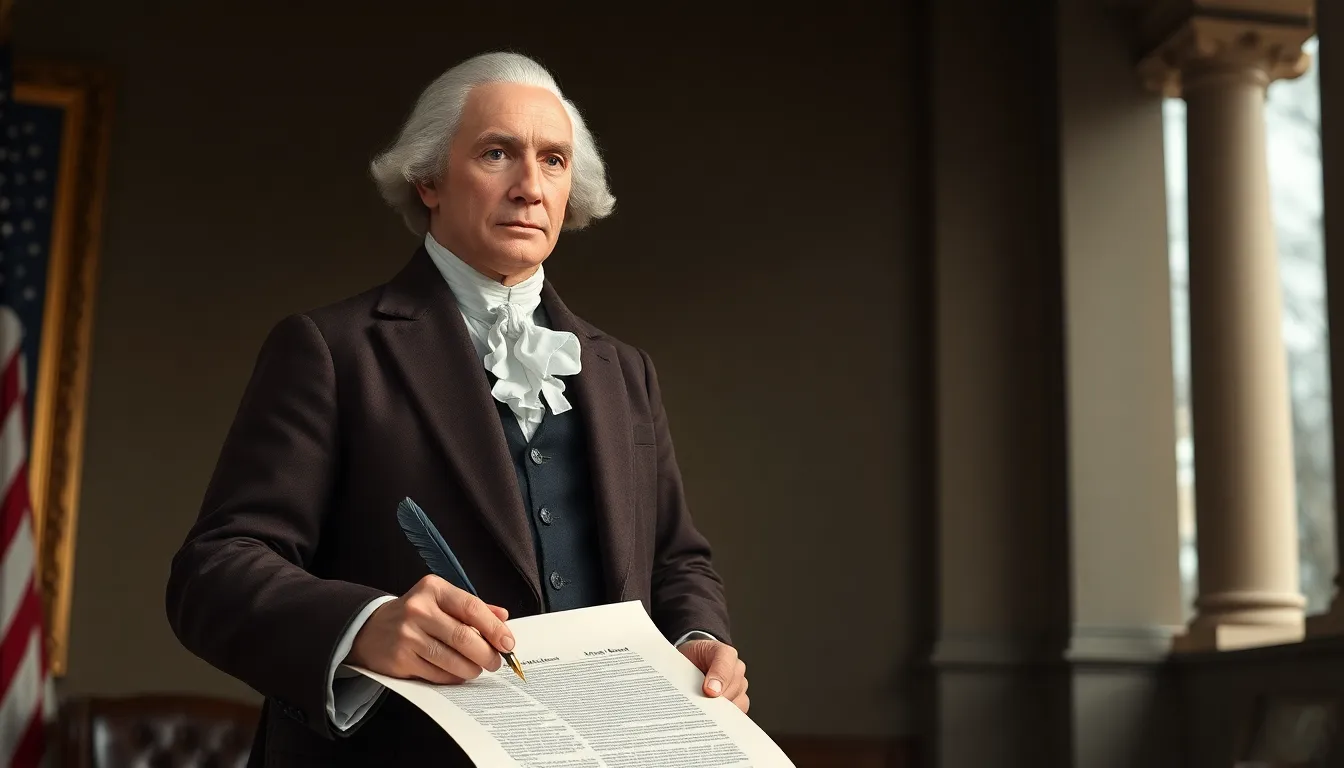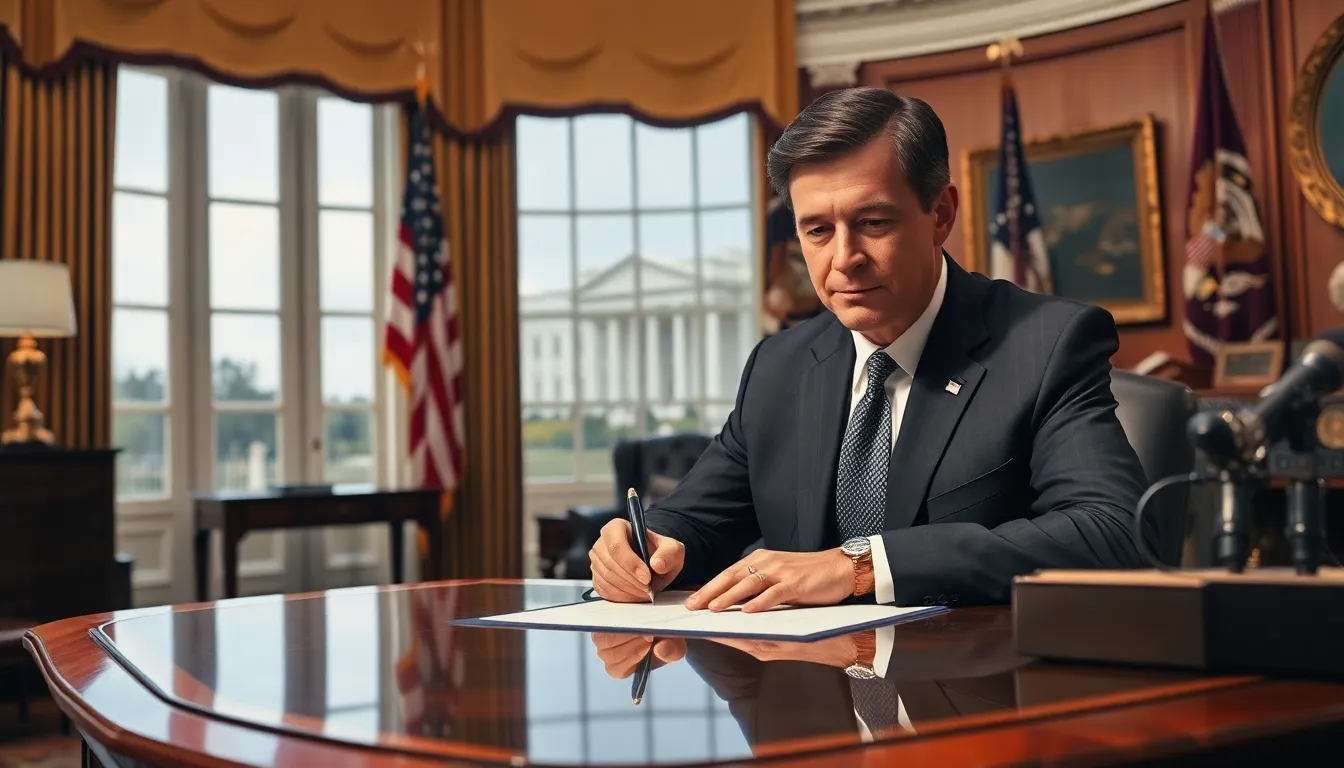Executive orders have played a crucial role in shaping U.S. policy and governance throughout history. These directives allow presidents to manage the operations of the federal government and address pressing issues without needing congressional approval. Understanding how many executive orders each president has issued offers valuable insight into their leadership style and priorities.
From Franklin D. Roosevelt’s unprecedented number of orders during the Great Depression to recent administrations that have utilized this power in various ways, the landscape of executive orders reflects the evolving challenges faced by the nation. This article explores the total number of executive orders issued by each president, shedding light on their impact and significance in American history.
Table of Contents
ToggleOverview of Executive Orders
Executive orders serve as crucial tools for U.S. presidents to exercise their authority. These directives enable presidents to direct federal agencies and manage government operations efficiently. Each executive order carries the weight of law, impacting policies across various domains.
Presidents have issued a significant number of executive orders historically. Franklin D. Roosevelt set a notable precedent by issuing 3,722 orders, a record during his time from 1933 to 1945. In contrast, modern presidents issue fewer executive orders. For instance, Barack Obama signed 277 orders, while Donald Trump issued 220. Joe Biden, in a short timeframe since his inauguration in January 2021, has already signed over 60 executive orders, indicating a proactive approach to policy initiatives.
Executive orders address pressing issues without needing congressional approval, facilitating rapid responses to crises and challenges. Presidents leverage these orders to implement policy priorities and influence law enforcement practices. The evolving nature of executive orders reflects the changing landscape of U.S. governance and the unique challenges each administration faces.
A compilation of executive orders issued by recent presidents showcases the variation in their use:
| President | Number of Executive Orders |
|---|---|
| Franklin D. Roosevelt | 3,722 |
| Harry S. Truman | 907 |
| Dwight D. Eisenhower | 484 |
| John F. Kennedy | 214 |
| Lyndon B. Johnson | 325 |
| Richard Nixon | 346 |
| Gerald Ford | 169 |
| Jimmy Carter | 320 |
| Ronald Reagan | 381 |
| George H.W. Bush | 166 |
| Bill Clinton | 364 |
| George W. Bush | 291 |
| Barack Obama | 277 |
| Donald Trump | 220 |
| Joe Biden | 60+ (as of October 2023) |
This table highlights the historical context and the range of executive orders issued by different administrations, demonstrating their varied approaches to governance.
Historical Context of Executive Orders

Executive orders have shaped U.S. governance since the early days of the Republic. These directives allow presidents to enact policies quickly and effectively in response to emerging challenges.
Early Executive Orders
Early executive orders date back to George Washington, who issued 8 orders during his presidency. These foundational directives focused on establishing protocols for the young nation, including appointments and military matters. Thomas Jefferson and Andrew Jackson further expanded this practice, utilizing executive orders for domestic governance and foreign affairs. The establishment of a precedent for executive authority occurred during this period, laying the groundwork for future presidents to exercise significant influence through executive actions.
Significant Changes Over Time
Over time, the use of executive orders evolved in scope and significance. Franklin D. Roosevelt marked a pivotal shift, issuing 3,722 orders from 1933 to 1945, largely to address the Great Depression’s economic challenges and World War II. Subsequent presidents, such as Harry Truman and Lyndon B. Johnson, continued this trend, issuing orders that addressed civil rights and international relations. In recent decades, presidents like Ronald Reagan, Bill Clinton, and George W. Bush employed executive orders to promote their distinct policy agendas. The decreasing quantity of orders from Barack Obama and Donald Trump—277 and 220, respectively—illustrates a more strategic approach to using executive authority. Recent trends show Joe Biden’s proactive stance, signing over 60 executive orders by mid-2023, reflecting ongoing adaptability in the face of contemporary issues.
How Many Executive Orders By President
Executive orders serve as essential tools for U.S. presidents to implement policies efficiently. The total number of executive orders varies significantly across administrations, reflecting differing leadership styles and political contexts.
Breakdown By Administration
| President | Executive Orders Issued |
|---|---|
| Franklin D. Roosevelt | 3,722 |
| Harry S. Truman | 907 |
| Dwight D. Eisenhower | 484 |
| John F. Kennedy | 214 |
| Lyndon B. Johnson | 325 |
| Richard Nixon | 346 |
| Gerald Ford | 169 |
| Jimmy Carter | 320 |
| Ronald Reagan | 381 |
| George H.W. Bush | 166 |
| Bill Clinton | 364 |
| George W. Bush | 291 |
| Barack Obama | 277 |
| Donald Trump | 220 |
| Joe Biden | 60+ (as of mid-2023) |
The table illustrates the substantial variation in executive order usage among presidents. Roosevelt’s tenure stands out with an extraordinary number of orders, largely due to the exigencies of the Great Depression and World War II.
Comparison of Executive Orders Across Presidents
Presidents utilize executive orders based on situational demands and political climates.
- High Volume Users: Roosevelt’s extensive use reflects a time of crisis and rapid change.
- Moderate Users: Obama and Trump issued orders with notable strategic focus, responding to specific national issues and challenges.
- Emerging Trends: Biden’s early issuance of over 60 executive orders signals a proactive governance style, emphasizing immediate initiatives in healthcare, climate change, and social justice.
Analyzing executive order issuance reveals insights into presidential priorities and methods of governance. Each president’s approach showcases their response to contemporary issues, shaping U.S. policy significantly through these directives.
Impact of Executive Orders
Executive orders significantly influence U.S. policy, governance, and the political landscape. Their legal authority and political ramifications shape the direction of the nation.
Legal Implications
Executive orders function as legally binding directives, allowing presidents to manage federal agencies and implement policies autonomously. Each executive order carries constitutional authority, primarily stemming from the Take Care Clause of the Constitution, which mandates that the president must ensure laws are faithfully executed. Courts review these orders’ legality, impacting their durability. Judicial challenges frequently arise, particularly when executive orders confront existing laws or congressional intentions. Landmark cases, such as Youngstown Sheet & Tube Co. v. Sawyer (1952), illustrate the limits of executive power. Ultimately, executive orders’ legal implications reflect the ongoing balance of power among the executive, legislative, and judicial branches.
Political Consequences
Executive orders also generate notable political consequences. They often spark debates regarding presidential overreach, especially when used to bypass congressional action. Public response can vary significantly, influencing the political climate and shaping party dynamics. For example, significant executive actions by President Obama faced substantial backlash from Republican lawmakers, leading to efforts to counteract or repeal these orders. Conversely, efforts by President Trump to reverse his predecessor’s orders highlighted the contentious nature of executive actions. As presidential priorities shift, the political landscape can change rapidly, illustrating how executive orders act as a bellwether for broader policy trends and public sentiment.
Executive orders serve as powerful instruments for U.S. presidents to navigate complex governance challenges. Their usage reflects the unique demands of each administration and the political landscape at the time. The historical evolution of these orders reveals a significant shift in how presidents approach policy-making, with figures like Roosevelt setting benchmarks that influence successors.
As recent administrations demonstrate, the number and focus of executive orders can vary greatly. This variability underscores the dynamic nature of presidential authority and its implications for the nation’s governance. The ongoing issuance of executive orders will likely continue to shape policy debates and public perception in the years to come.





